# Collections API (Go)
The collections API is a Golang package that improves upon state-related abstractions in the Cosmos-SDK. Here, we explain blockchain state and the advantages of NibiruChain/collections (opens new window).
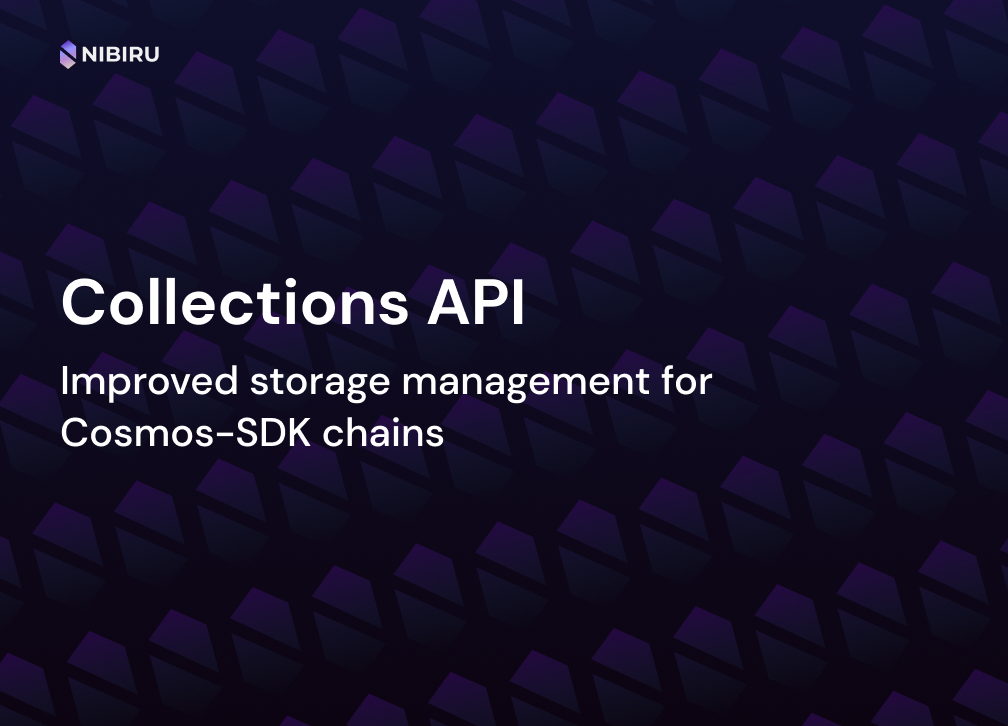
We implemented the collections API for better state management on Nibiru Chain and thought the tool would be useful for the broader Cosmos community. After integrating it to our core modules, we proposed an architectural design record (ADR) to the Cosmos-SDK, which got merged near the end of 2022. It was awesome to see such positive responses from core SDK contributors.
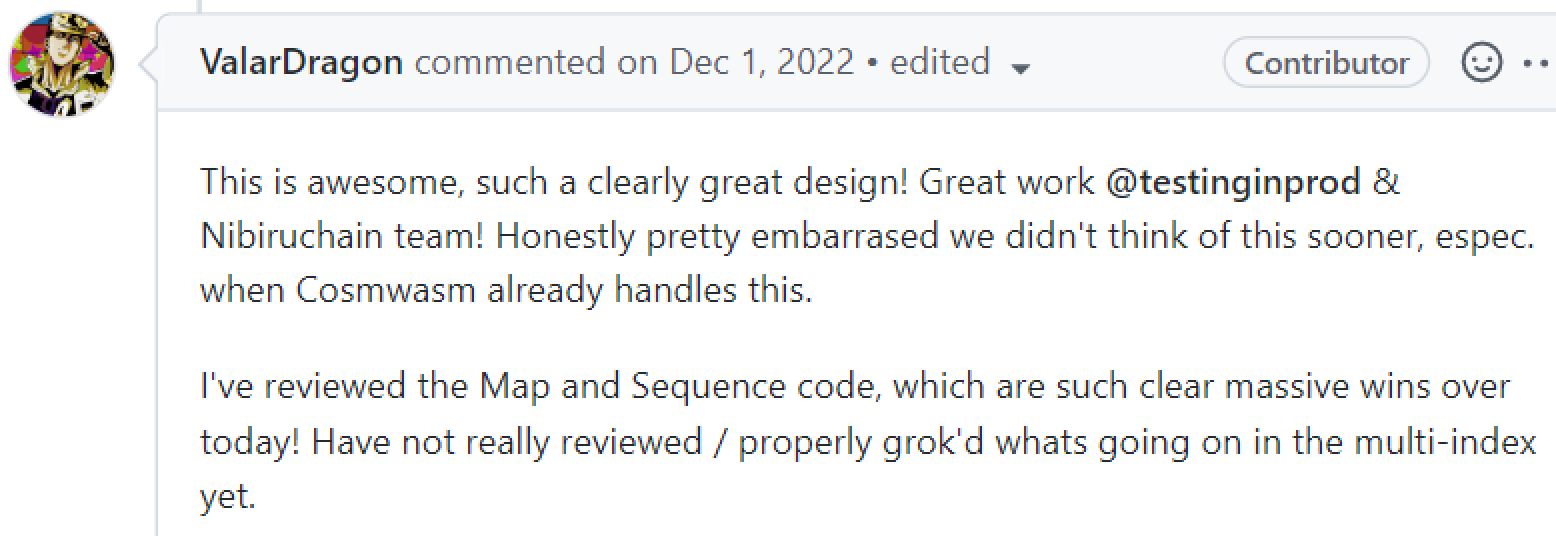
"There is something nice about the simplicity of collections for simpler use cases and the prospect of being able to migrate modules to collections without requiring a migration is obviously attractive.” - Aaron Craelius (opens new window) at Regen Network (aaronc)
- Reference: Cosmos-SDK Architectural Design Record #62: Collections, a simplified storage layer for Cosmos-SDK modules (opens new window)
- The architect/inventor and primary builder of the collections was @testinginprod (opens new window).
- The original implementation for the collections API lives inside NibiruChain/collections (opens new window). It has since been included as part of the Cosmos-SDK and published under the cosmossdk.io/collections package (opens new window).
- We leverage the API heavily in modules of Nibiru Chain (opens new window) such as x/oracle, x/perp, and x/vpool.
The rest of this post is an explainer on how “state” works and where protocol developers on app chains can benefit from using the collections API.
# What is State?
A blockchain is a deterministic state machine that transitions between states based on transactions. “State” is how we refer to the representation of this system at any point. State includes everything the chain tracks: account balances, liquidity positions, exchange parameters, and much more.
The state machine is deterministic because a node that executes the same transactions starting from an initial state (block) will end up in the same ending state.
# State in the Cosmos-SDK
When developers build applications, they need to specify when to read, update,
or delete state. To deal with this, the Cosmos-SDK provides a module-specific,
key-value store (KVStore). Applications can read and write byte data with
these KVStores, and the collections of these stores makes the state.
This is where the first problem pops up. In business logic, we often deal with
“structured data”, in this context referring to things like structs, classes,
arrays, queues, maps, or JSON in programming languages. However, when we deal
with storage, we have to work with bits and bytes because that’s the format
programs use to represent data in memory. Human-readable strings are great for
development but bad for computational efficiency.
In the case of SDK app chains, the consensus engine (Tendermint Core) (opens new window) is agnostic to the application and only accepts transactions in the form of raw bytes, which aren’t generally human-readable.
For this reason, SDK apps end up creating a plethora of functions to deal with storage types. It’s verbose, error prone, and increases maintenance costs in the form of tests. We’ll run through a concrete example to highlight this.
# Examples from the x/staking module
You don’t need to read these code blocks too closely. The point of including them is to showcase how much work goes into getting the create, read, update, and delete (CRUD) behavior described in the previous section.
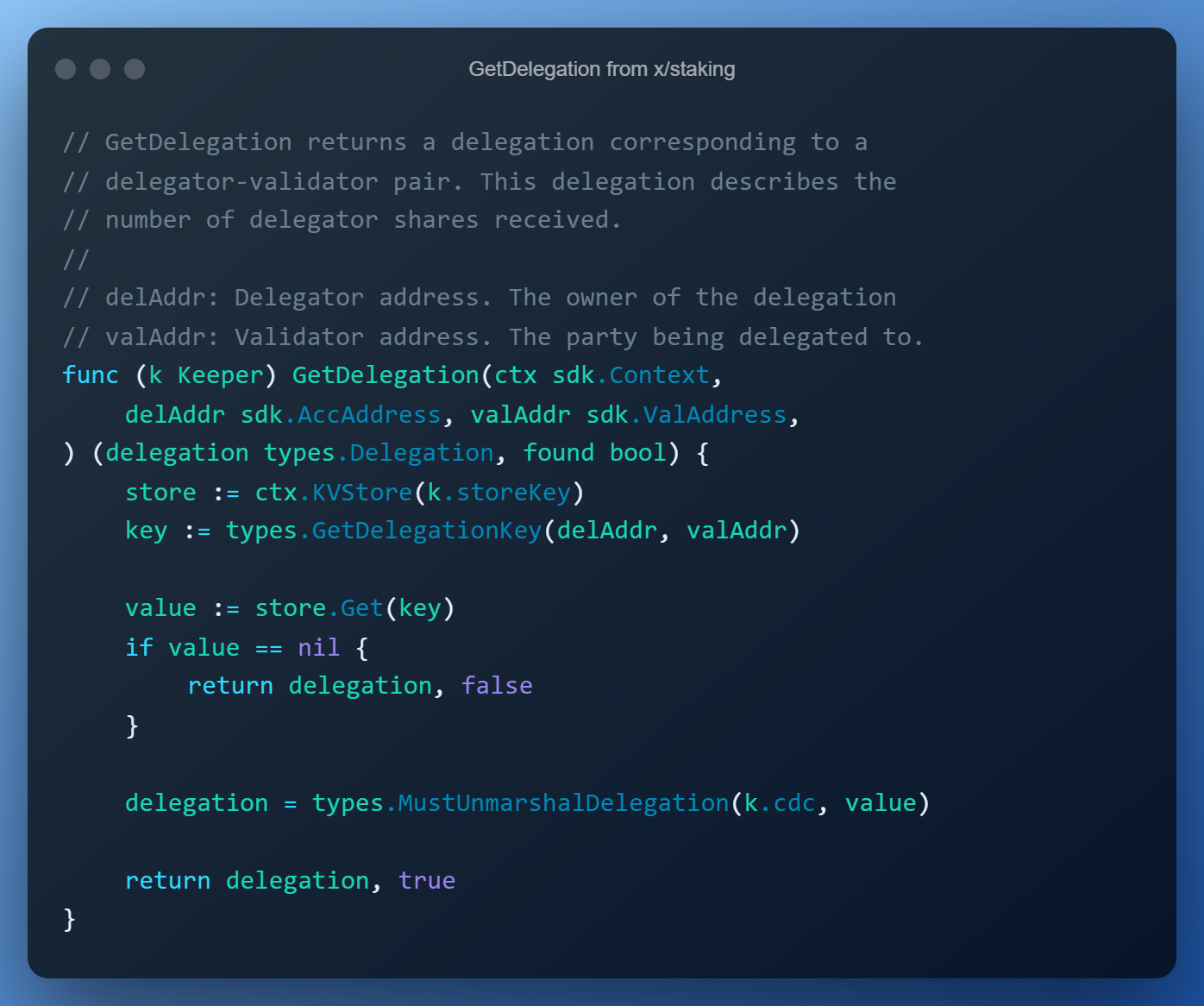
To get the full utility of the delegations store, the SDK also had to include similar functions for:
- Adding items -
SetDelegation - Removing items -
RemoveDelegation - Iterating through the items -
IterateAllDelegations - And reading all of the items -
GetAllDelegations
This is all just for one key type. On top of this, certain information needs to be defined in types/keys.go. This includes:
# 1 — Store prefixes for each key type
Keys store prefixes in the keys.go file of the x/staking module Keys store prefixes | from keys.go in the x/staking module
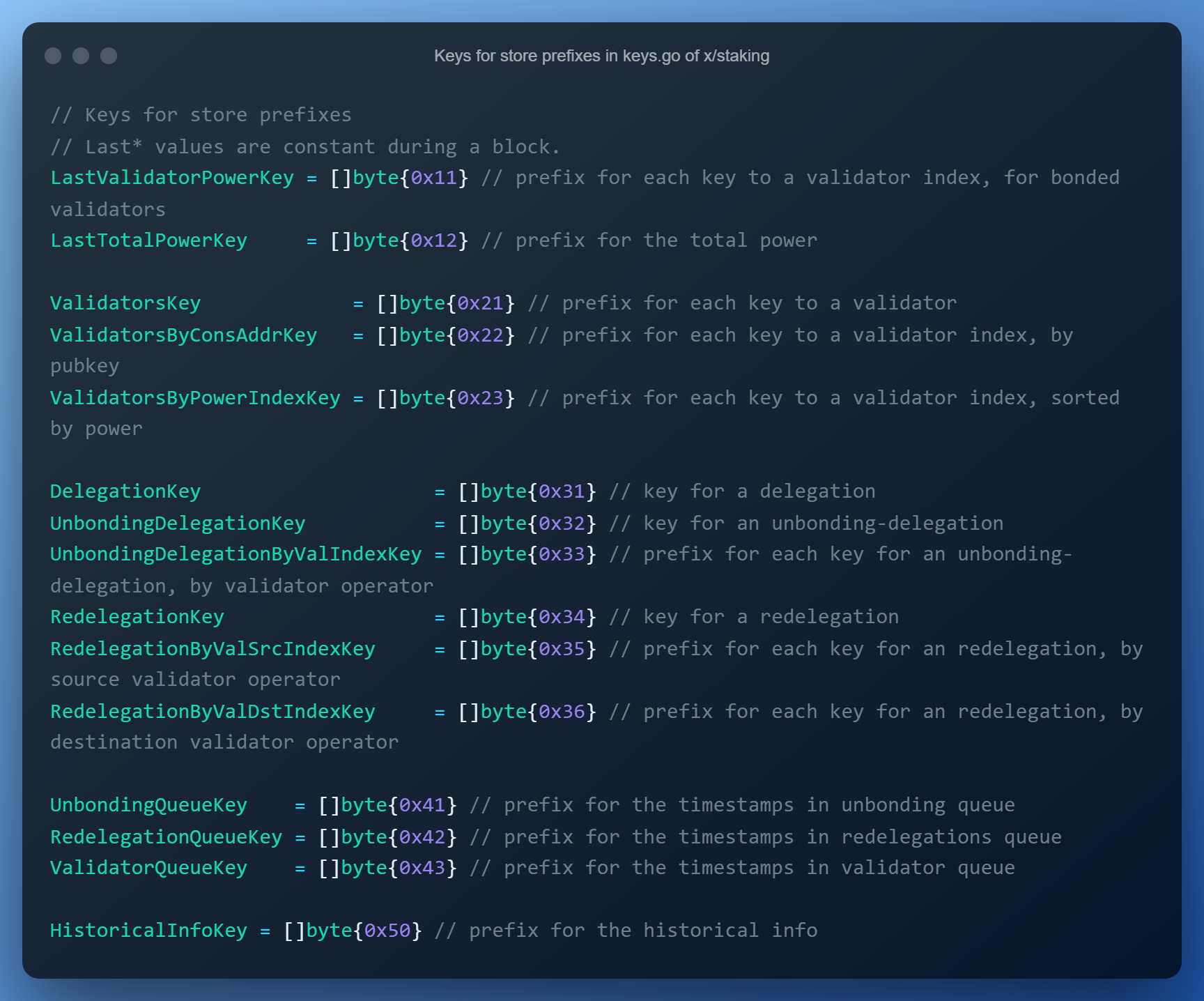
# 2 — Key encoder functions for each key type
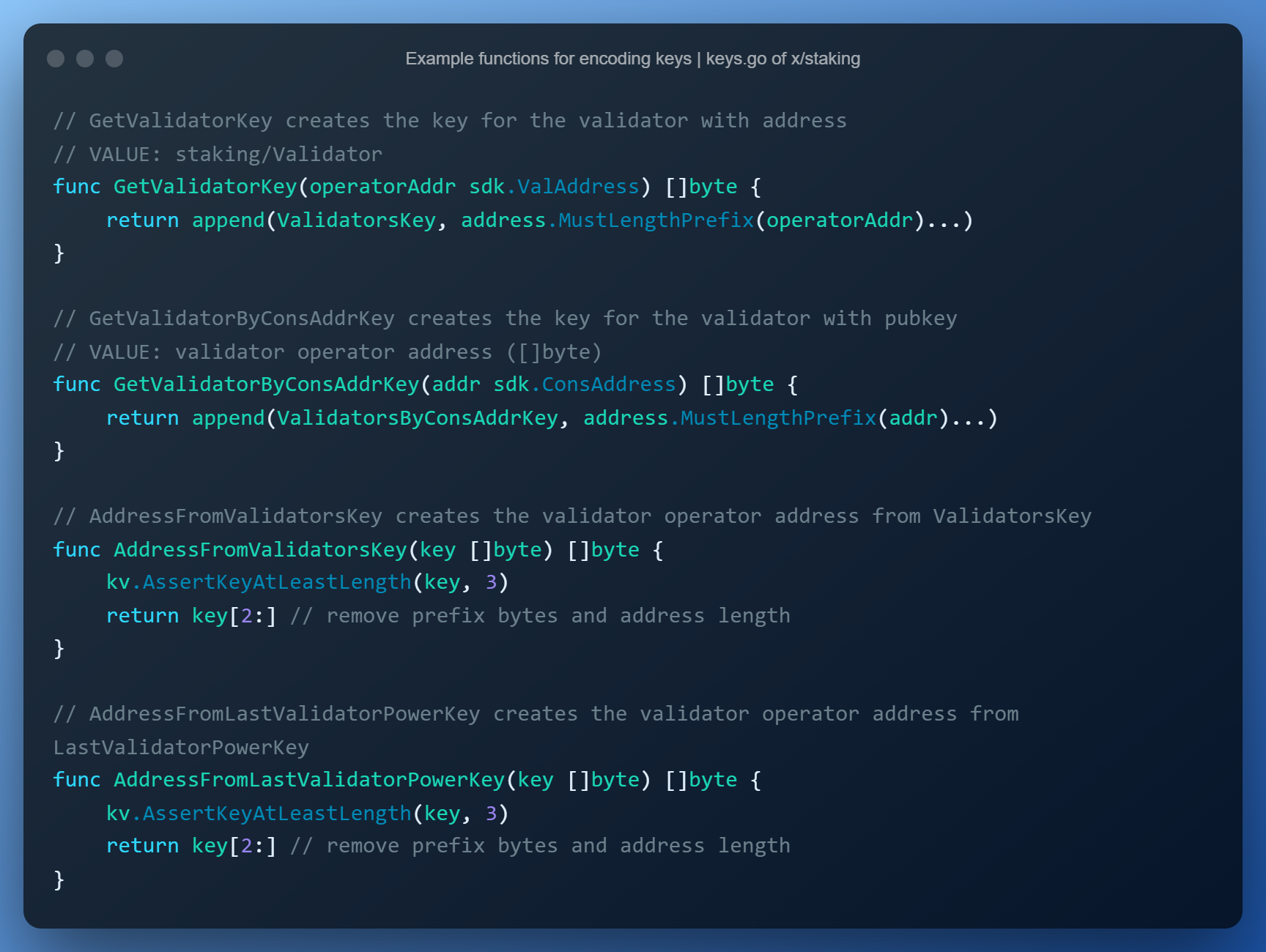
For each of the 14 key types in x/staking, we have to define a minimum of 4
functions (totaling over 50) just for basic CRUD. This process ends up being
extremely repetitive across modules and storage types.
Defining how to encode and decode between keys and bytes is one of the most error-prone tasks even for seasoned Cosmos developers.
This process adds maintenance requirements with tests, and it tends to get nasty when dealing with objects mapped with multi-part keys.
For example, a perpetual Position on Nibi-Perps is uniquely mapped
(identified) by the combination of an AssetPair and the Trader address that
owns the position. We may want to access the collection of Positions in
different ways without exhaustively going through every position, e.g.
- “get all of the
Positionsfor a givenAssetPair” - “get all of the
Positionsfor a givenTrader” - “get all of the long
Positionsthat are underwater on anyAssetPair”
All of this data is super useful to access and update for use cases like trading, liquidating positions, and market-making. But, multi-part keys get extremely tricky when we want to add more complex functionality.
# Enter the collections API (opens new window)
The collections API is a Golang package that improves upon the storage abstractions in the Cosmos-SDK by bringing a developer experience similar to CosmWasm/cw-storage-plus (opens new window), the main library for storage abstractions in CosmWasm smart contracts.
# The collections API has the following advantages
- It doesn’t require custom tooling and has few dependencies. Collections just relies on generics.
- Protocol developers can focus on business logic. By hiding the complexity of encoding and decoding keys, CRUD (create-read-update-delete) operations become much easier to understand.
- Composite keys are seamlessly managed with
collections.Joinand have accessors for iterations through different views of the same store. - Handles complex structures: hello, Golang
IndexedMap!
# Appendix: Using Collections
# Defining storage types
In collections, storage types are defined on the Keeper struct. Because the Keeper is the king of a module’s business logic, state definitions should be there, not scattered across multiple files. Let’s see how we instantiate all this new collections types.
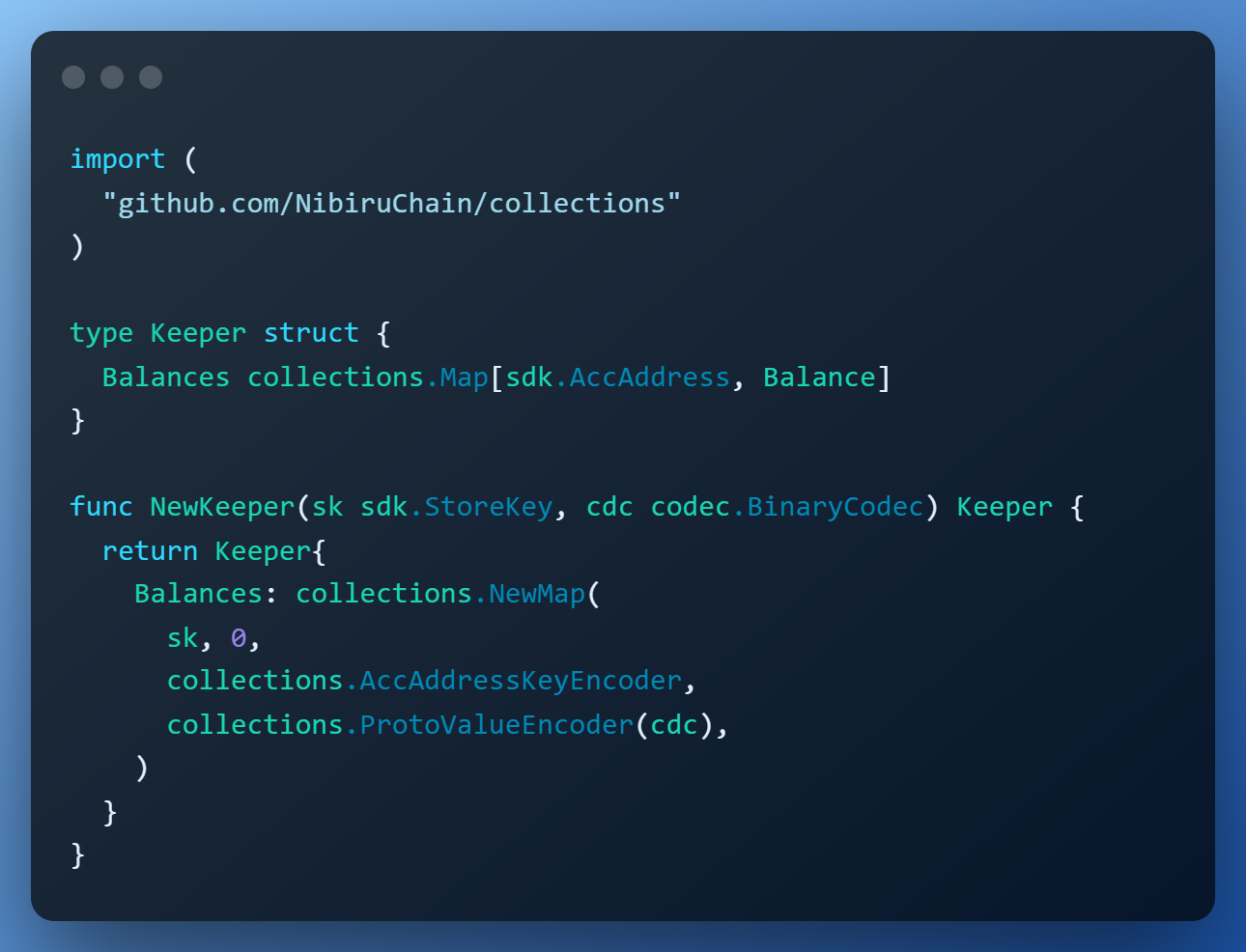
So in order to instantiate a collections.Map, we need four things:
- The module’s store key (this is required to get the
KVStore) - A namespace number ranging from 0 to 255. This is basically the reserved namespace byte for all the objects associated with this collection. It means that the maximum number of collection types we can have in a single module is 256, which should be plenty.
- A
KeyEncoderthat instructs thecollections.Maphow to encode and decode keys. The collections API has already defined most of the useful key encoders you might need. - A
ValueEncoderthat instructs thecollections.Mapon how to encode and decode its values. Similar to theKeyEncoder, the most commonly needed value encoders are built into the library.
# What do you get from this?
- A type safe API. Keys and Values are type safe. You don’t have to deal with bytes anymore.
- Safe key encoders which take care of:
- proper ordering
- safe prefixing
- No more need to define
Get/Set/Delete/Iteratemethods on your keeper specific to every object. - A nice
Iterate APIusingcollections.Ranger. - Other powerful collections APIs to explore:
KeySet,Item,Sequence,IndexedMap.
Here’s how some of the examples from earlier in the post look with collections.
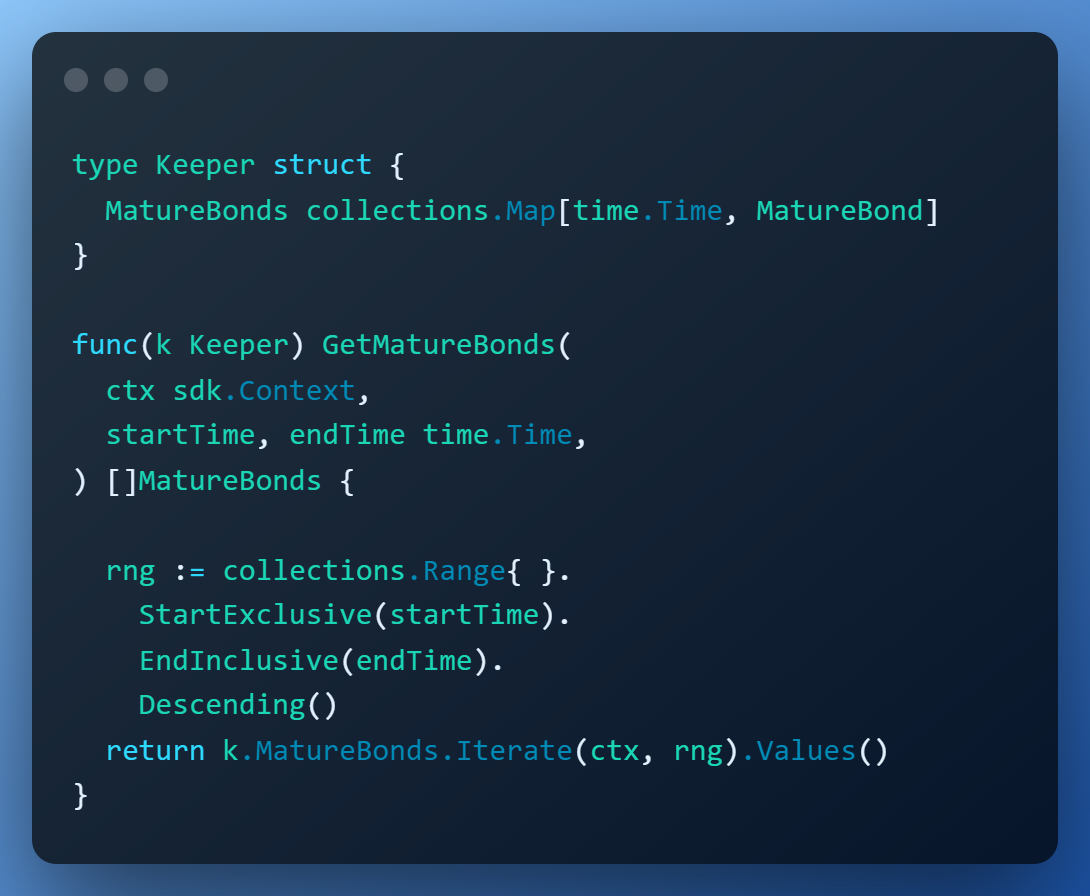
Now let’s see the positions case (note: collections.Pair is a type which defines a key composed of two other keys, collections.PairRange implements an interface which has a nicer API for working with collections.Pair keys):
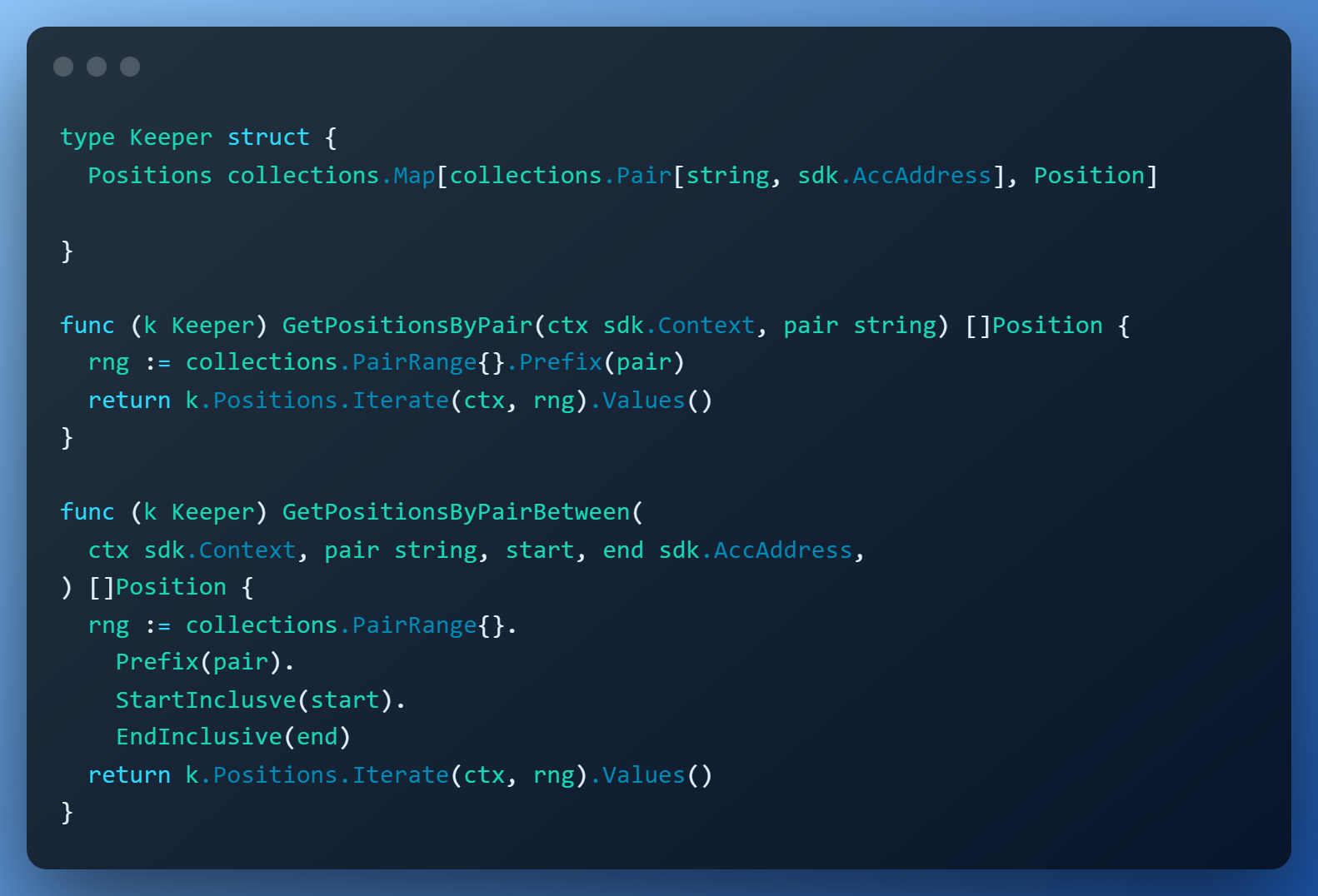
More instructions and examples are provided in the collections repository (opens new window).